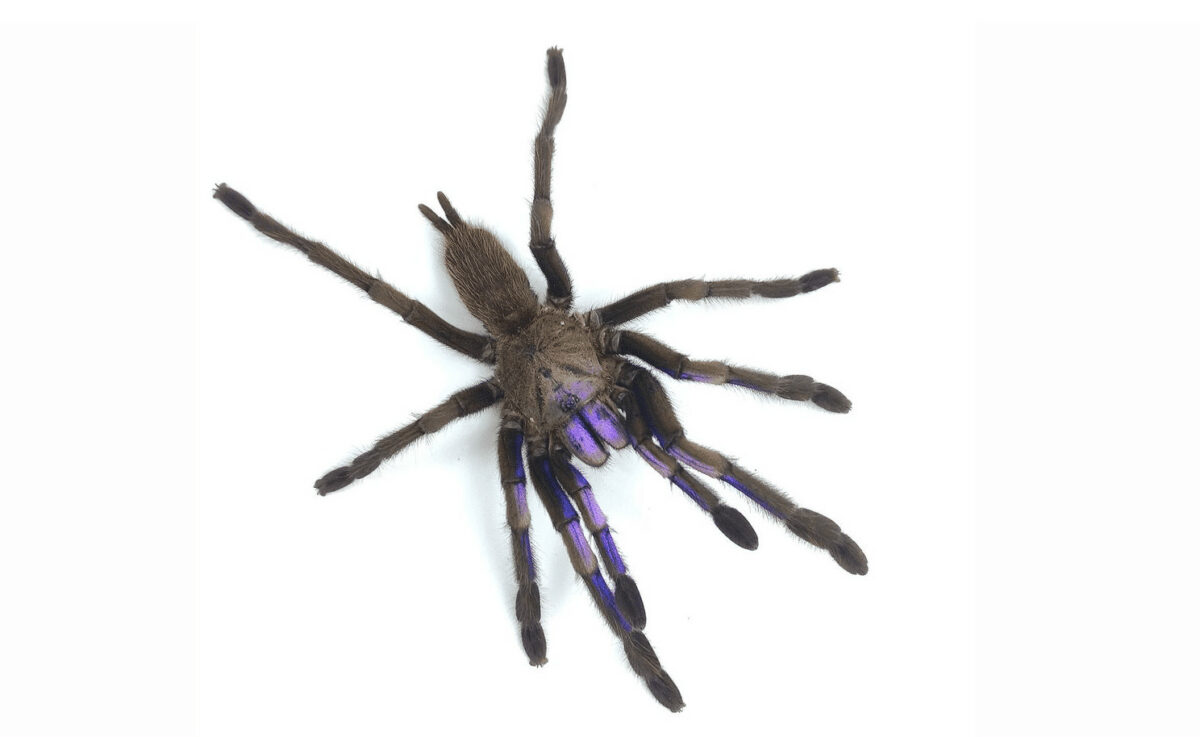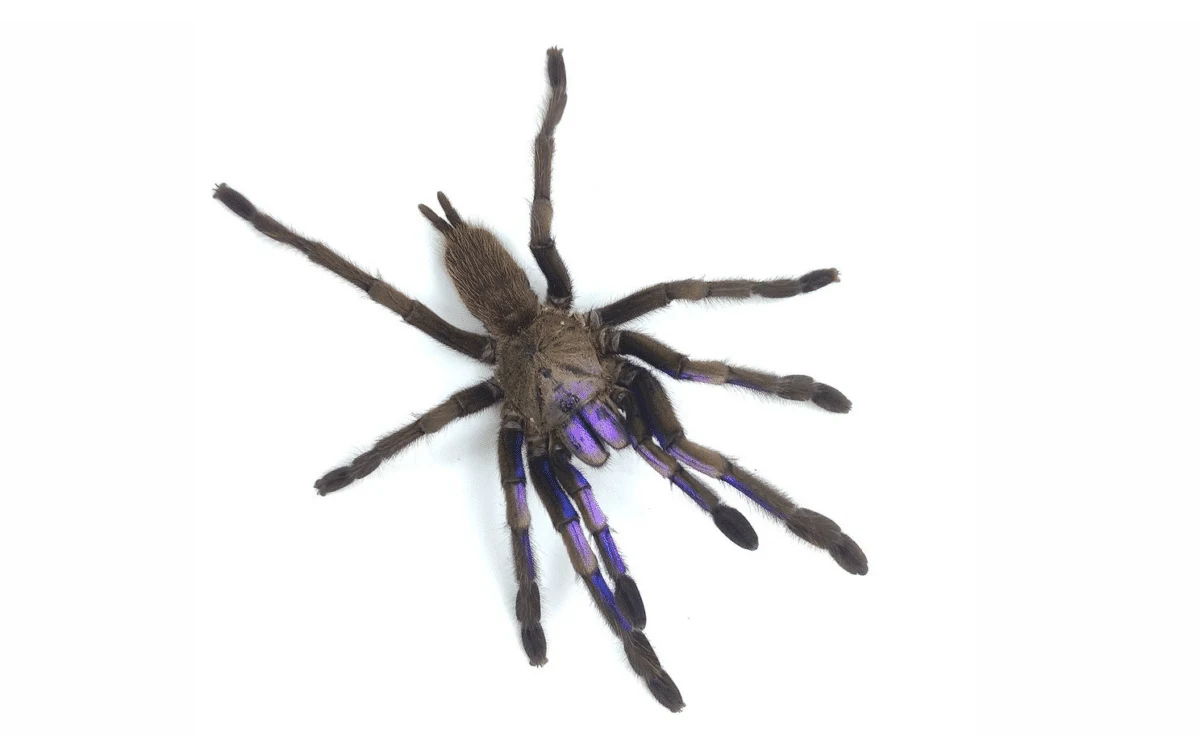New research has unveiled a captivating electric blue tarantula species in Thailand.

A team of Thai researchers encountered this spider during their expedition to Phang-Nga province in the southern region. This is where they were studying the variety and geographic range of tarantulas in Thailand.
Narin Chomphuphuang, a researcher from the Department of Entomology and Plant Pathology at Khon Kaen University, described the discovery as how they encountered a previously unknown tarantula species that showcases a mesmerizing blue-violet hue, reminiscent of dazzling electric blue sparks.
The team, which stumbled upon the species residing in a mangrove forest, included JoCho Sippawat, a Thai wildlife YouTuber and co-author of the recently published paper.
In a bid to highlight their discovery and support the indigenous Lahu people of northern Thailand, a community to which Sippawat belongs, the team conducted an auction to grant the privilege of naming the new species. The moniker Chilobrachys natanicharum emerged from the names of two executives from the company that won the naming campaign.
The most captivating part is the presence of blue coloration in animals due to its rarity in nature.
Check out: Rare All-White Kangaroo Rescued from Mother’s Pouch.
How The Blue Came About
The researchers clarified that this distinct coloration results from the configuration of “biological photonic nanostructures,” rather than conventional pigments. In essence, the vibrant electric blue hue doesn’t stem from the presence of blue pigments. It rather originates from the exceptional structure of their hair. Which integrates nanostructures capable of manipulating light to produce this striking blue appearance.
The scarcity of blue in nature can be attributed to the challenges associated with absorbing and reflecting specific light wavelengths.
The tarantula’s distinctive coloring results from the presence of two distinct types of hairs. Metallic-blue and violet, distributed across various parts of their body. This includes the legs, chelicera (pincer-like mouthparts), and carapace (upper shell).
The spiders’ coloring and other characteristics exhibited variations depending on their sex and age. Female and young male tarantulas tend to display a greater abundance of violet-colored hairs on specific body parts, relative to the metallic blue ones.
Check out: Upsetting an Elephant’s Equilibrium: The Blindfold Trick.
Preferred Habitat
The newly discovered tarantula inhabits tree hollows, making it challenging to capture. Researchers had to scale trees to entice the spiders out.
Tarantulas are categorized as either terrestrial or arboreal. However, the Chilobrachys natanicharum, as noted by the researchers, displays remarkable adaptability by thriving in both environments.
Nonetheless, due to the decline of mangrove forests, largely attributed to deforestation, the electric blue tarantula has become one of the world’s most scarce tarantula species, according to Chomphuphuang.
Check out: Dog Caught Speeding While Behind Wheel Of Car.
The Footage Of Finding The Blue Tarantula
Wrap Up
In conclusion, the discovery of the captivating electric blue tarantula species in the mangrove forests of Phang-Nga province, Thailand, represents a remarkable achievement in the field of entomology. This rare find, led by a dedicated team of Thai researchers, including the renowned wildlife YouTuber JoCho Sippawat, has not only expanded our understanding of tarantula diversity and distribution but also showcased the beauty of the natural world.
In sum, this discovery not only celebrates the wonders of biodiversity but also underscores the importance of continued exploration and conservation efforts to protect and preserve these remarkable species and the ecosystems they inhabit. It serves as a reminder of the intricate beauty that exists in the natural world and the need for its safeguarding for future generations to appreciate and study.
Thanks for reading along! For more articles like this, check out our related article links below.
Next up:
Join our Forum for free today!

- Huge Pet Bison Breaks Into House - July 22, 2024
- Giant Black Bear Surprises Beachgoers by Emerging from the Ocean in Florida - July 22, 2024
- Brave Man Plays Instrument While Huge Bear Caresses His Shoulder - July 22, 2024



